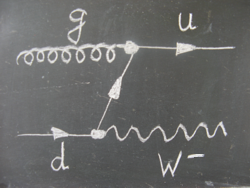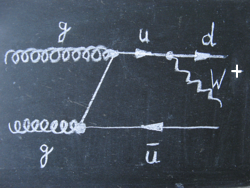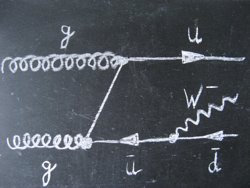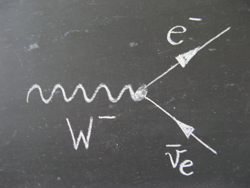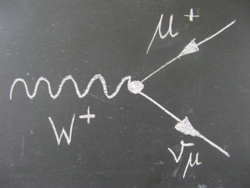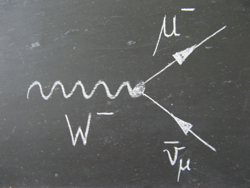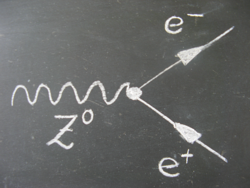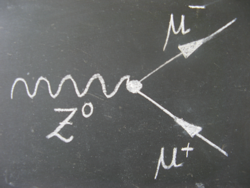W-Path
W Particle
The exchange particles responsible for the weak interaction are the three carrier particles W+, W- and Z0.
W particles are produced in different ways during proton-proton collisions in the LHC.
The following picture gallery introduces them.
Feynman diagrams are used for better illustration.
Get to know the diagrams here.
Production of different W particles
Decay of W particles
The W particle is heavy (80.4 GeV/c2) and decays almost immediately after its production.
In two-thirds of its decays, a quark-antiquark pair is produced, which appears as jets in the detector.
In one third of the W-decays, a lepton and a neutrino are produced.
In these cases, the leptons can be an electron, a muon, or a tau with equal probability. Before the tau can be detected in the detector, it decays as well.
In our events, we will only look at decays of W particles into electrons (or positrons) or muons (or anti-muons). Thus we get the following Feynman diagrams:
Events with a signature in the detector as illustrated by the last four diagrams will be regarded as signal events in our data samples. Each is an unambiguous indicator of a W particle which has existed for a very short time. All other events have to be categorized as background. Let's have a look at possible background events in this last picture gallery:
Background events
If protons collide not only can W particles be created but, for example, Z0 particles as well.
These particles also decay promptly after production:
With this information we should be able to identify all W events in MINERVA.

